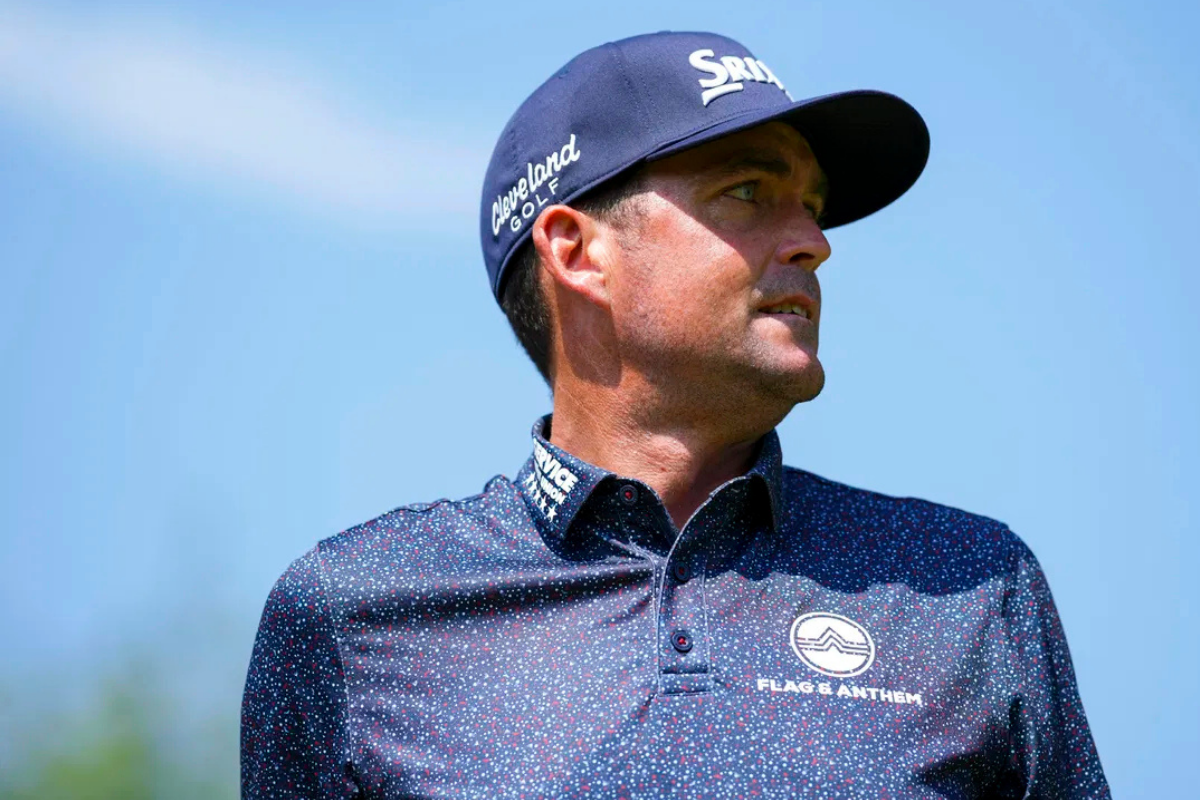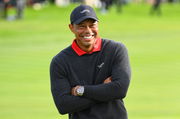
Imago
Credits: Imago

Imago
Credits: Imago
Slow play debates in golf are nothing new. While the sport appears calm, players with drawn-out routines often test fans’ patience. Patrick Cantlay is a frequent target of such criticism, and recently Ryder Cup captain Keegan Bradley has joined him. According to one outspoken veteran, simply watching Bradley play is “torture.”
Watch What’s Trending Now!
Mark Allen, on his podcast Talk Birdie to Me, was quite particular in signaling out Bradley. “If you watch a PGA Tour event, and let’s say Keegan Bradley is in the way, then that can really suck the life out of a broadcaster,” he noted, trying to suppress his laugh.
“When he’s taken so long, you know, he’s got a three-footer and his foot either side, he’s back and forth, back and forth, back and forth, you know what he does,” he said on the podcast.
ADVERTISEMENT
Now, unlike Cantlay, whose routine of squirming and wobbling before hitting a shot frustrates many, Bradley’s criticism mostly arises from his use of AimPoint. Throughout his 2025 season, there have been instances across social media where fans could not hold their annoyance.
One such instance occurred at the TOUR Championship this August, where Captain America took 51 seconds in all to read and hole a five-foot bridie putt. He repeatedly crouched, stepped back, re-crouched, and rechecked the slope using his AimPoint finger-gauging technique. For anyone, it would have been frustrating. But social media nazis who never really need a legitimate reason to cancel someone filled the comments with phrases like “the opposite of entertainment.”
@PGATOUR
This 5 foot putt has Keegan Bradley doing the Cha Cha for 51 seconds.He has to pair himself with Cantlay on Friday and Saturday. He has to.@RyderCupUSA pic.twitter.com/RiaiCtmj8Z
— Chris Yndo (@ChrisYndo) August 24, 2025
ADVERTISEMENT
Another flashpoint occurred during the Rocket Classic. Bradley reportedly spent over a minute on a straightforward four-foot putt, employing the same crouch-step-recheck AimPoint method. The video was widely shared, with golf commentator Alex Straunch pointedly remarking, “Imagine being paired with a bloke on a weekend that did this. A full minute to knock in a four-footer. Truly embarrassing.”
Other commentators like Jim Nantz and fellow player Lucas Glover have also weighed in. While not directly at Bradley, their criticism has mostly circled the use of AimPoint. To them, such a routine appears both excessive and a drag on the pace of play. Even before his current controversies, Bradley’s slow pre-shot waggling and his previous anchoring technique — before the anchoring ban — had drawn criticism for being disingenuous or irritating to watch.
ADVERTISEMENT
“It’s also kind of rude to be up near the hole and stomping around, figuring out where the break is in your feet. It needs to be banned. It takes forever.” Glover explained on SiriusXM PGA Tour Radio, while also providing alternative methods to be used in its place.
These are just a window into a broader controversy that is slowly erupting in the golf world.
Slow play has long been a sore point in professional golf, and the PGA Tour’s pace-of-play policy reflects ongoing attempts to address it. Under current rules, players have 40 seconds to take a shot — 50 seconds if they’re first in the group — with “excessive time” potentially leading to a warning or fine. Yet, such penalties are rare, and enforcement remains inconsistent.
ADVERTISEMENT
Over the years, high-profile names like Bryson DeChambeau, criticized for his deliberate pre-shot routines at the 2019 Northern Trust, and J.B. Holmes, who drew backlash at the 2018 Farmers Insurance Open, have kept the debate alive. Fans often rank slow play among their biggest frustrations, arguing that drawn-out routines sap the energy from broadcasts and make it harder for casual viewers to stay engaged.
In hindsight, Bradley’s extended pre-putt ritual, which includes subtle toe-tapping, precise shoulder alignment, and maintaining focus with “heads-up” visual technique, mirrors the Quiet Eye drills that many elite athletes use to enhance their precision. But, for viewers and fellow players on the course, this could understandably be seen as overkill.
Interestingly, Bradley has defended his approach, staying true to his nature of adamancy. “I think that what’s important with a golf swing for a player, but especially a PGA tour player, is not to try to make it something that isn’t you. I’ve owned my swing. I know what to do, I know the mistakes that I make when things are bad. I think over the years I’ve really learned to accept how my swing looks.”
ADVERTISEMENT
The gist of it is simple: He knows what he is doing. And as long as it works for him, he doesn’t care.
And like him, many keep advocating for the AimPoint technique
Top Stories
Charley Hull Calls for Public Help After Her Golf Clubs Are Stolen in Broad Daylight

Tiger Woods Accepts New Job That Could Change PGA Tour Forever

Bryson DeChambeau Clarifies Bad Blood With Rory McIlroy & Co. Amid Stalled Merger

Jessica Korda Drops 3-Word Reaction to Nelly Korda’s Post With Tommy Fleetwood

Suspended PGA Tour Player Declines to Blame LIV Golf for Jay Monahan’s Decision

AimPoint is defended by pros despite widespread criticism
AimPoint, created by instructor Mark Sweeney, is a green-reading system based on the physics of slope, friction, and ball speed. Players use their feet to feel the gradient and their fingers to gauge slope percentages, turning those readings into precise aim points through “finger calibration.” The method reduces perception errors and boosts accuracy, and pros like Adam Scott, Max Homa, and Lydia Ko have used it successfully. Still, its crouch-and-gauge routine often looks slow and awkward to viewers, highlighting the clash between science-driven precision and the push for faster play.
So, while there are many critics of AimPoint, the technique has found a strong foothold among certain pros on the circuit. Two-time major champion Collin Morikawa has credited the technique. “AimPoint has 1,000% helped me. I don’t think people understand how AimPoint works to really say this is right or wrong.” He is also the select few who acknowledge the cons that come if the technique is not used properly.
Instructors and players emphasize that AimPoint is simply another skill to master, comparable to learning a specialized shot or technique. Joe Hallett, who has worked with elite women golfers like Stacy Lewis and Inbee Park, notes that criticism often stems from jealousy or misunderstanding. “It’s just another skill you learn, like how to hit a flop shot or how to hit a stinger,” Hallett explains.
As technology advances everywhere, both golfers and fans need to adapt to the increasingly widespread use of AimPoint. While it may affect the pace of play, the fact remains that it isn’t going anywhere anytime soon.
ADVERTISEMENT
ADVERTISEMENT
ADVERTISEMENT

